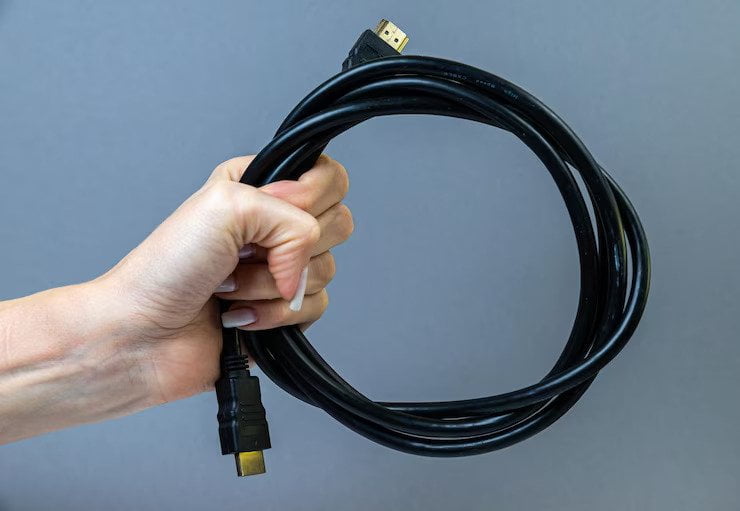Power cables are the lifelines of electrical systems, carrying electrical energy from one point to another. The appropriate cable is crucial to ensure efficient and safe electricity transmission. This article delves into choosing the right power cable by exploring the key factors to consider for optimal performance in various applications.
Understanding Power Cable Types
Before delving into the factors for choosing the right power cable, it’s essential to understand the different types available in the market.
They come in various configurations, including:
- Single-Core: It consists of a single conductor enclosed within an insulating material and an outer sheath.
- Multi-Core: Comprise multiple conductors bundled together, each insulated and enclosed within a common outer sheath.
- Armored: Feature an additional layer of protection in metal armor, making them suitable for harsh environments.
- Shielded: Have an added shielding layer to protect against electromagnetic interference.
- Unshielded: Lack additional shielding and are ideal for applications with minimal interference concerns.
Factors To Consider While Opting For The Right Power Cables
The thermal heating and conductor size of the cable usually depict the existing carrying rate of any power cable. Further, the cable spacing, as well as insulation materials, might be relevant to heat dissipation. But is that all? There are other factors, too, which you may want to consider before choosing the optimum power cables:
Voltage And Current Requirements
One of the primary considerations is determining the voltage and current requirements of the electrical system. The power cable must handle the voltage levels and current loads without overheating or causing electrical losses. Consulting with an electrical engineer or expert is recommended to ensure the proper selection based on the application’s electrical demands.
Environmental Conditions
They can be subjected to various environmental conditions, including temperature extremes, moisture, chemicals, and physical stress. Choosing the one designed to withstand the specific environmental challenges of the installation location is crucial. For instance, UV-resistant and water-resistant cables are essential in outdoor or underground applications to maintain optimal performance over time.

Ampacity And Current-Carrying Capacity
Ampacity refers to the maximum current-carrying capacity of a power cable under specified conditions. Selecting the one with an ampacity that comfortably exceeds the maximum expected current load is crucial to prevent overheating and potential damage. Ignoring ampacity ratings can lead to performance issues and safety hazards in the electrical system.
Fire And Flame Resistance
Choosing the ones with appropriate fire-retardant properties is essential in applications where fire and flame resistance are crucial. Fire-resistant cables are designed to minimize the spread of flames and provide crucial protection in critical areas, such as emergency evacuation routes and fire alarm systems.
Compliance With Standards And Regulations
Ensuring that they comply with relevant industry standards and regulations is vital. Certifications from recognized bodies such as UL (Underwriters Laboratories) and IEC (International Electrotechnical Commission) signify that the cables meet the required safety and performance standards. Adhering to these standards helps guarantee the reliability and safety of the electrical system.
Flexibility And Bend Radius
In applications that involve frequent movement or routing through tight spaces, flexibility and bend radius become critical considerations. Choosing power cables with adequate flexibility and a suitable bend radius ensures ease of installation and decreases the risk of cable damage due to bending stress.
Things You Didn’t Know About Them
Until now, I have talked about the ways to choose a suitable power cable. But did you know these cables have a lot of intriguing facts associated with them that nobody really talks about? So, here are certain lesser-known facts related to power cables we bet you didn’t know:
-
In terms of conductivity, aluminium is better than copper
A lot of people consider copper the conductivity champion because it really is so! But that is only for a few times. Copper wiring is extremely efficient when it comes to electricity and heat conductivity- credit goes to high free electrons amount. While aluminium consists of a conductivity index of 36.9, copper ranges somewhere around 58.7.
-
Electrical cables cannot provide stable performance
The existing carrying capacity of any conductor is defined as the overall amperage it can tackle before it melts down. Either the conductor or the insulation. Contradictory to what people think, electrical cables are not potent enough to deliver consistent carrying capacity. External factors such as section area, installation, or the temperature of the conductor can result in material decay.
-
Newer power cables are not very durable
You might think they are, but new power cables are less durable- manufacturers are to be blamed. Most power cables have to deal with extremely rigorous tests as well as quality checks in order to reach the destined commercial shelves. Thus, it is extremely common to find out that power cables do not usually last as long as people expect them to.
-
Protection from damages
As a matter of fact, cable armor provides no protection against the physical impacts of power cables. They are also known as steel-wired armors and are constructed to produce primary-grid electricity supply. These armors might boost the tensile strength of a cable and do not offer protection against physical impacts- irrespective of the situation type.
-
No moisture protection
The aforementioned factors suggest that cable armors can boost the tensile strength of almost any material. But no matter how hard you try, they can never safeguard your wires against moisture exposure. If there is excessive humidity, your armor will be damaged. As a result, the cables will be left vulnerable and unsafe from the exterior elements. You can opt for other cable types for a water immersion project.
Conclusion
Selecting the right power cable is a critical decision that directly impacts electrical systems’ performance, safety, and reliability. Understanding types, assessing voltage and current requirements, and considering environmental conditions are essential to making an informed choice.
Ampacity, fire resistance, and compliance with industry standards further contribute to the optimal performance of the selected power cable. Engineers and system designers can confidently choose the ones that ensure efficient and reliable electricity transmission for various applications by carefully evaluating these factors and seeking expert advice.
Read Also:




























